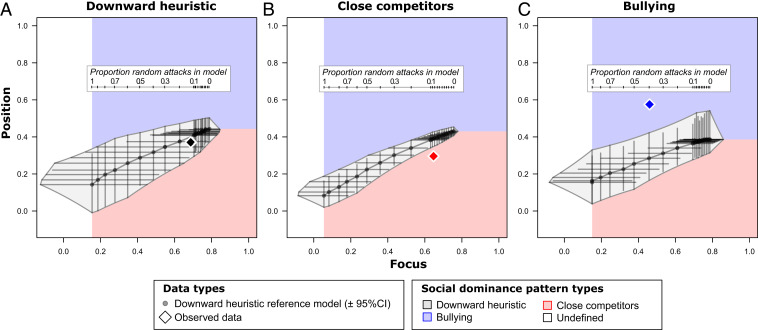Fig. 2.
Each social group was categorized by which rank-dependent social dominance pattern they followed. Shown here are three examples of pattern assignment, to (A) downward heuristic [mule deer (32)], (B) close competitors [monk parakeet (29)], and (C) bullying [vervet monkey (33)]. Diamond points show observed focus and position values for each group. Gray circular points indicate focus and position values ( 95% CI) for reference model datasets generated using a downward heuristic with different proportions of randomly directed aggression (Inset). This ensemble of reference models shows how expected focus and position values change as the proportion of randomly directed aggression events increases, from no randomly directed aggression (100% adherence to the downward heuristic with all aggression directed toward lower-ranked opponents, right side) to fully randomly directed aggression (left side, where aggression is purely driven by individual aggressiveness, with no rank information). Social dominance patterns for each group were assigned by comparing focus and position values in each empirical group to the reference model ensemble for that group. If the observed value fell within the downward heuristic polygon, empirically observed focus and position values could have been produced by a downward heuristic; when values fell outside this polygon, another pattern is needed to explain the observed empirical patterns. When position values were lower than expected, and aggression toward opponents ranked close below in the hierarchy was more common, we categorized the aggression pattern as close competitors and when position values were higher than expected, and aggression toward opponents ranked far below in the hierarchy was more common, we categorized the pattern as bullying.

